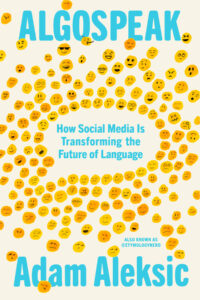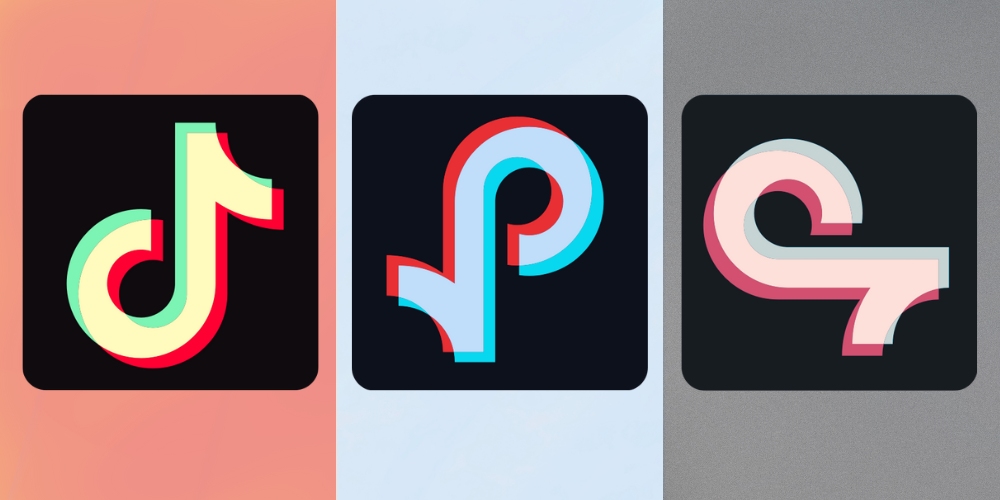It seems as though everything happens faster on the internet. Each week brings a dizzying parade of new memes, fads, and slang words that evaporate as quickly as they materialize. It can be hard to keep up with the latest references unless you’re spending hours a day catching up on social media trends.
Of course, it wasn’t always like this: Look at Middle English six hundred years ago. Language was far more insular. Each city and region had its own, different dialect, to a point where there can scarcely be any discussion of a uniform “English” language as we understand it today. The only reason to adopt a new word was that it helped you better communicate with your fellow townspeople, so of course change came about more slowly.
Then England centralized, and the dialects of London and the East Midlands became the basis of what we now think of as Standard English. It was as if a switch had flipped: The upper class suddenly had a set vocabulary they could point to as “correct,” meaning that all other dialects became “incorrect.” By the 1750s, the word “slang” emerged as a catchall term to describe the nonstandard words used by the lower classes.
As the internet subsequently coalesced around large social media platforms such as Facebook, Twitter, and YouTube, our social networks (and thus our avenues for language change) expanded.
Around that same time, England became more connected than ever, meaning that more communities could coalesce to come up with slang. The lower classes especially felt freer to create new words since they weren’t bound by the same rules, and wider social networks helped those words spread more quickly. If the upper class eventually started using those same words too, they stopped being called slang and became everyday language.
This acceleration was directly aided by the rise of print media. For example, in the mid-nineteenth century, there was an American slang fad to give words incorrect abbreviations, like “O.K.” for “all correct.” That was then printed in a Boston newspaper, helping it reach mainstream usage, which is how we have the word “okay” today.
However, newspapers had their limitations. They were—and still are—written in Standard English, which means they operate under the rigidity of upper-class linguistic norms. The later advent of radio and television media allowed more people to hear unfiltered communication, although even those mediums came with unique sets of content expectations.
Enter the World Wide Web, where anybody could post content for anybody else to see. Mankind finally became released from centuries under the reign of the language police, and new words sprang up from all the new corners of the internet. As early as the 1980s, internet users started making up slang like “lol” and “noob.”
But this early internet era was the digital equivalent of medieval England: It was decentralized and disconnected in a way that didn’t see much language change beyond the broad need to invent shared vocabulary. As the internet subsequently coalesced around large social media platforms such as Facebook, Twitter, and YouTube, our social networks (and thus our avenues for language change) expanded like a newly industrialized Great Britain, preparing us for the next great linguistic shift: the rise of short-form video.
*
As a middle school student in the mid-2010s, it felt like every cultural reference could be traced back to Vine. During its short-lived but influential existence, the platform allowed users to post up to six-second clips, usually replicating a dance move or funny catchphrase. The videos dominated our collective consciousness in a way that only my generational cohort can truly understand. You couldn’t walk down a school hallway without seeing someone dab, whip, or hit the nae-nae—all dances popularized by the site.
With these videos also came a slew of new slang words, like “on fleek,” meaning “perfect,” or “yeet,” an interjection said while throwing something at high velocity. It also popularized existing words from African American English, such as “bae” and “fam,” both terms of endearment for one’s close friends.
These words were able to spread in the way they did because of the emergence of viral “trends”—popular internet fads characterized by rapid recombinations of some source material. The earliest trends replicated dances, but later iterations also spread as meme formats. “Yeet,” for example, became widespread through a series of videos of a boy named Lil Meatball doing a dance, but humorously edited so that his friends would say “yeet” as he scored a basketball three-pointer or shot someone. The more edits that popped up, the more the term spread, until it began spawning its own trending formats, like another widely replicated video of a woman throwing a soda can while yelling, “This bitch empty! Yeet!” From there, “yeet” became an established piece of Gen Z slang.
This new dominance of rapid social media “trends” was uniquely enabled by Vine’s short-form video style, since its content encouraged repetition unlike any previous medium. Although the platform was shut down in 2017 due to monetization issues, it had clearly tapped into something unique, and other companies were paying attention.
As Vine began dying out, another app named Musical.ly was emerging as its obvious successor. Like Vine, it relied on trend-based short-form videos, although the structure was more flexible (up to a minute), more focused on lip-syncing, and primarily filmed vertically (a response to the rise of smartphones). By 2017, it had reached 200 million users and caught the attention of ByteDance, which wanted to replicate the success of its own Chinese video app, Douyin.
Musical.ly was acquired and merged into TikTok, which is where ByteDance perfected the recipe by engineering the most addictive social media website imaginable. As soon as you opened the app, a rectangle of video would command the entire screen, while flashy colors and exciting content would make you completely forget about the existence of an outside world. Easily accessible in-app editing made it possible for anyone to hop onto the latest trend, go viral, and become a celebrity. Gone were the barriers to stardom posed by previous, long-form apps like YouTube. Now anything could and did happen overnight, while the only way to stay in touch was to constantly use the app.
But TikTok’s main strength lay beyond its already impressive user interface. The platform’s most important characteristic was undoubtedly its algorithm, which did far more than censor words. Powerful machine learning tools additionally analyzed every move you made: They tracked what you liked, what you commented on, how long you watched a video, and which profiles you viewed. All this got synthesized into your ever-changing feed, which predicted your preferences without you ever having to think about it. Don’t worry, TikTok knew.
The algorithm was, of course, designed to maximize the amount of time you spend on the app, and it’s worked: The average global social media user now spends more time on TikTok than anywhere else, which has left the other companies scrambling to catch up. In August 2020, Meta launched Instagram Reels, a similarly algorithm-driven vertical-video feature, and Alphabet followed suit with YouTube Shorts just a month later. It’s clear that this style of content is the best way to hook viewers, and will be the dominant style of social media as long as we remain reliant on our smartphones.
The massive success of the personalized recommendation algorithm relies on a few tricks, but the underlying principle is quite intuitive: If you like a certain kind of content, you’ll probably like other content similar to it. For instance, I recently liked a video of a man singing “Barbie World” by Nicki Minaj to the grave of President Lyndon B. Johnson. The algorithm correctly inferred that I enjoyed the song and sent me more funny “Barbie World” videos, which improved my experience on the app. It also probably pushed those videos to people who fit the same demographic profile as me, since they’re also likely to respond positively.
TikTok’s main strength lay beyond its already impressive user interface. The platform’s most important characteristic was undoubtedly its algorithm.
When these songs accompany a meme or dance that people want to re-create, a trend is born. At its core, this process is the same as those on Vine and Musical.ly, just spread through a more sophisticated recommendation system. The videos are now especially compelling because they make it seem as if everyone were hopping onto a trend (a perception exacerbated by your biased recommendation feed). Because we’re social creatures, your recommendation page will pressure you to watch or participate in these trends, so you can feel caught up on the latest cultural references. This turns into a positive feedback loop that has irrevocably changed the music industry: Numerous songs, from Doja Cat’s “Say So” to Lil Nas X’s “Old Town Road,” reached Billboard No. 1 status primarily by becoming TikTok dance trends.
Songs like this were particularly important in the early days of TikTok, when it was still a music app and people wanted to consume videos of people dancing to songs they liked. Since then, of course, the app branched out to also play the roles of educator, journalist, and comedian, but the underlying strategies remained the same. If you’re an entertainer trying to make someone laugh, you might set your video to a trending audio of a funny catchphrase.
In January 2023, for example, TikTok was inundated with the same sound bite of a woman saying, “Side-eye. SIDE-EYE.” People around the world flocked to film themselves looking suspiciously to the side, captioned with a humorous explanation. The audio clip went viral in the same way that “Old Town Road” became popular: It turned into a trend that people were excited to replicate.
A few weeks later, a second, similar audio also went viral, of the phrase “bombastic side-eye. Criminal, offensive side-eye.” Drawing on the popularity of the initial meme, but fresh with a newer, funnier catchphrase, the clip went viral in much the same way as “This bitch empty! Yeet!” rode on the coattails of the first “yeet” video.
It’s easy to write off “side-eye” as yet another meme, but TikTok isn’t some isolated, inconsequential vacuum. In the wake of the “side-eye” videos, Google Trends showed searches for the word spike tenfold and then consistently remain at a much higher search interest than before. People offline were saying the phrase far more frequently than they were in 2022, all because it was popularized online.
__________________________________

Excerpted from Algospeak: How Social Media Is Transforming the Future of Language by Adam Aleksic. Copyright © 2025. Available from Alfred A. Knopf, an imprint of Knopf Doubleday Publishing Group, a division of Penguin Random House, LLC.
Audio excerpted with permission of Penguin Random House Audio from ALGOSPEAK by Adam Aleksic, read by the author. © Adam Aleksic ℗ 2025 Penguin Random House, LLC. All rights reserved.
